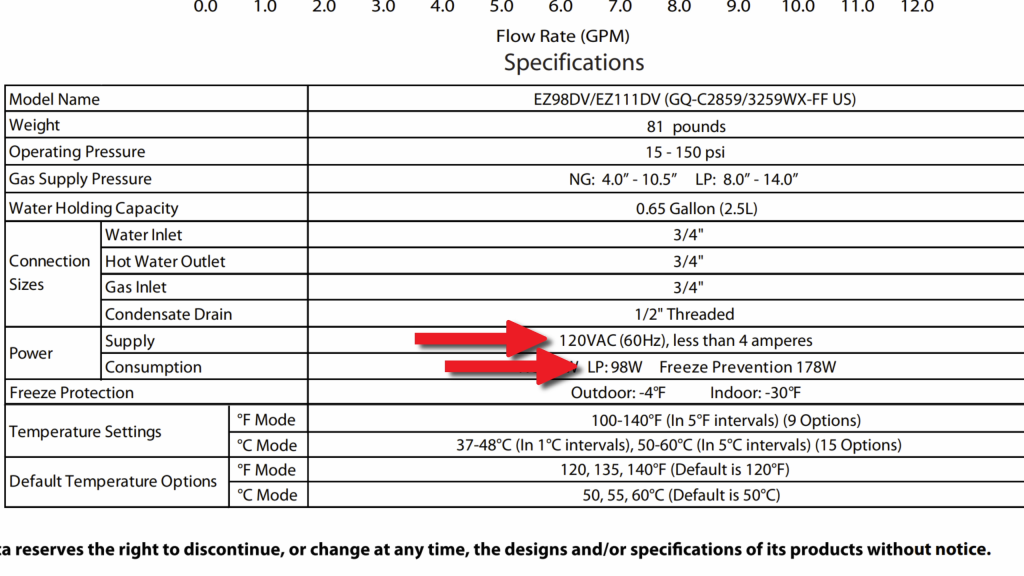Battery backups are not a required item when installing or using a tankless water heater, however they can be a nice addition in certain situations.
Battery Backups (also called a UPS or Uninterruptable Power Supply) are most commonly used with computers and networking equipment. The purpose is to give the user time to finish what they are doing and turn off the computer in the event of a power outage. Likewise, a battery backup would allow the tankless to keep running for a period of time if the power goes out in the middle of a shower or other hot water use.
Most big box electronics stores, office supply stores and online stores sell battery backups so they are relatively easy to purchase but there are a lot of options out there and which one is right for you?
The most important thing to look for in a battery backup is one that has a pure sine wave output. Tankless heaters have a circuit board, motors and servos that require a nice clean source of power. Lower end battery backup usually have a modified sine wave or modified square wave output, and those are OK for small electronics like a cable modem, router or even your TV. Items like a high end computer or tankless water heaters need a higher end battery backup. You can generally find out if a battery backup has a modified sine wave or pure sine wave output by checking the technical specs of the battery backup.
The next factor is how long do you want the tankless to run while on battery power. This is the part that can be confusing, especially if you end up going down the youtube rabbit hole. Keep in mind the point of a battery backup is to allow you to finish what you’re doing when the power goes out, not to run connected devices indefinitely. For those situations you’d want to consider a generator.
To determine which battery backup meets your needs, you need to know the voltage and wattage of your tankless water heater. All of our tankless models are designed for use with 120 volt AC power, so that part is easy. To find the wattage, you’ll need to pull up the spec sheet for your exact model. You can easily locate it on our support site, support.noritz.com and click technical documents. From there you can search for your model and download the spec sheet.
Once you have the spec sheet open, locate the section with the power ratings. As you can see in the example below, the EZ111 uses 120 volts AC as mentioned before, and the propane model consumes 98 watts during normal operation. If you live in an area that freezes, you could use the freeze prevention wattage to allow the unit to keep itself warm for a period of time. Just remember if the power outage last more than an hour it’s likely the battery backup will run out of power under those conditions.

Once you’ve determined the wattage of your unit, you can use your search engine of choice and search for battery backup calculator. You’ll be presented options from all the relevant battery backup manufacturers.
Each battery backup calculator will vary a bit but you should be able to locate options to enter the voltage, wattage and desired run time. Once you enter that information you should be presented a few to several options. You’ll need to check the specs of the selected UPS and verify it has a pure sine wave output. Look through the results and find a battery backup that has a pure sine wave output, is close to your desired run time and at a price you’re willing to spend.
The same basic concept can be applied to selecting a gas powered generator to power not only your tankless but other devices in your home. Make sure it provides 120 volts AC and outputs a pure sine wave.
Battery Back-Up
an external battery power supply used to operate a tankless heater for short periods during a power outage
